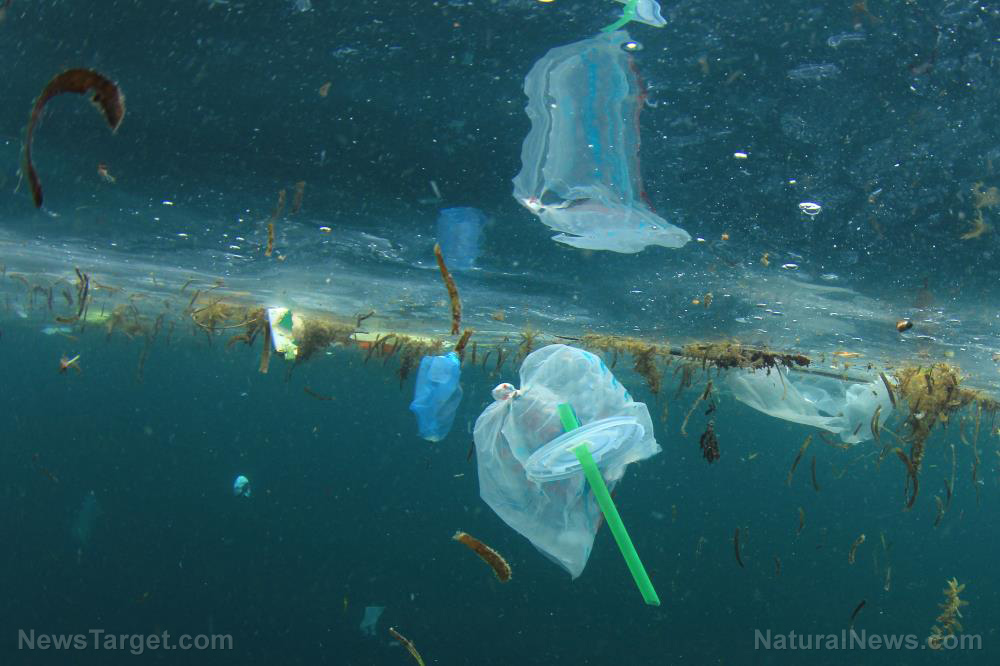REPORT: Reducing global plastic pollution would require halting plastic production, improving waste management, participating in cleanups
09/21/2020 / By Divina Ramirez

Plastic pollution is a global threat, killing animals and choking thousands of landfills. The plastic crisis also poses a significant threat to human health in the form of microplastics and toxic chemicals from plastics.
But despite the numerous studies on plastic pollution and its far-reaching impact on the entire planet, there is still so much to learn about it in the pursuit of sustainable solutions for the plastic crisis in the coming decades.
In a recent report, for instance, an international team of scientists estimated that about 24–35 million metric tons (Mt) of plastic are entering the global ocean on an annual basis. Should these figures persist into the next decade, the amount of plastic entering the ocean is projected to exceed efforts to mitigate plastic pollution.
But the plastic crisis is not a lost cause. In light of this dire projection, the scientists also assessed the level of effort needed to achieve a targeted global reduction in plastic pollution. In addition, the team looked at the impact of using existing mitigation strategies in response to modeled future scenarios of plastic pollution.
Their findings revealed that the road to cleaner oceans – a global reduction target of less than 8 metric tons of plastic come 2030, to be exact – is going to require a global reduction of 25–40 percent in plastic waste, as well as an increase in plastic waste management from 6–60 percent in low-income countries.
Large-scale coastal cleanup efforts will also be integral to reducing at least 40 percent of annual plastic wastes that end up in the oceans. To put this into perspective, some 750 million people need to participate in coastal cleanup campaigns on an annual basis until 2030 to achieve the 40 percent reduction in marine plastic waste.
The current plastic pollution scenario
Over the last couple of decades, plastic production has risen to unprecedented heights given the demand for convenient, cheap and accessible products in the market. This boom in production has resulted in more plastic waste than experts have estimated in the past.
Just last month, for instance, scientists from the UK’s National Oceanography Centre (NOC) found 12–21 million tons of polyethylene, polypropylene and polystyrene suspended in the top 200 m of the Atlantic Ocean. (Related: Mediterranean waters filled with microplastics from foam and fishing gear.)
Should these values hold true for depths of about 3,000 m, scientists could be looking at over 200 million tons of plastic fragments, and that’s just for three of the most littered plastics. This dire figure indicates that scientists have been grossly underestimating the extent of plastic pollution in the oceans.
Ocean Conservancy also released its latest report on its annual International Coastal Cleanup initiative – a single day of picking litter along beaches worldwide. The campaign’s 943,000 volunteers ended up netting 20.8 million tons of trash in 116 countries.
But to their surprise, cigarette filters came in as the second most dominant beach litter. Cigarette butts have held the top spot since the International Coastal Cleanup’s inception in 1986. However, data from 2019’s cleanup revealed that the 4.2 million cigarette butts paled in comparison to the 4.7 million plastic litter.
Most of these are plastic-based food packaging, such as plastic bottles, bottle caps, straws, stirrers, cups, lids, plastic bags, food wrappers and other single-use plastics. It was the first time that plastic packaging appeared to be the most ubiquitous litter along beaches worldwide.
Minimizing plastic pollution
While plastic is sure to end up in the environment so long as humans use plastic, consumers alone cannot be blamed for the millions of plastic litter that turn up along coasts. Chelsea Rochman, an ecologist from the University of Toronto and the senior author of the report, emphasized the need to halt plastic production.
Halting plastic production is so crucial that existing mitigation strategies, like cleanups and improvements in waste management, will not have a substantial impact if plastic production growth does not let up. In order to achieve this, there needs to be a fundamental transformation in how plastic is both produced and consumed.
In an ideal scenario, this transformation would involve reusing plastic-based litter rather than seeing them become waste. This transformation also entails reducing the amount of new plastic produced and reimagining how humans can use and dispose of plastic materials, said Rochman.
Rochman and her colleagues also suggest that a substantial reduction in global plastic waste generation would require creating better policies that seek to reduce the production of new plastics, as well as the consumption of single-use plastics.
Read more articles about the impact of plastic pollution on oceans’ health at OceanHealthNews.com.
Sources include:
Submit a correction >>
Tagged Under:
beaches, marine life, microplastics, Oceans, Plastic, plastics
This article may contain statements that reflect the opinion of the author
RECENT NEWS & ARTICLES
COPYRIGHT © 2017 REAL SCIENCE NEWS





















